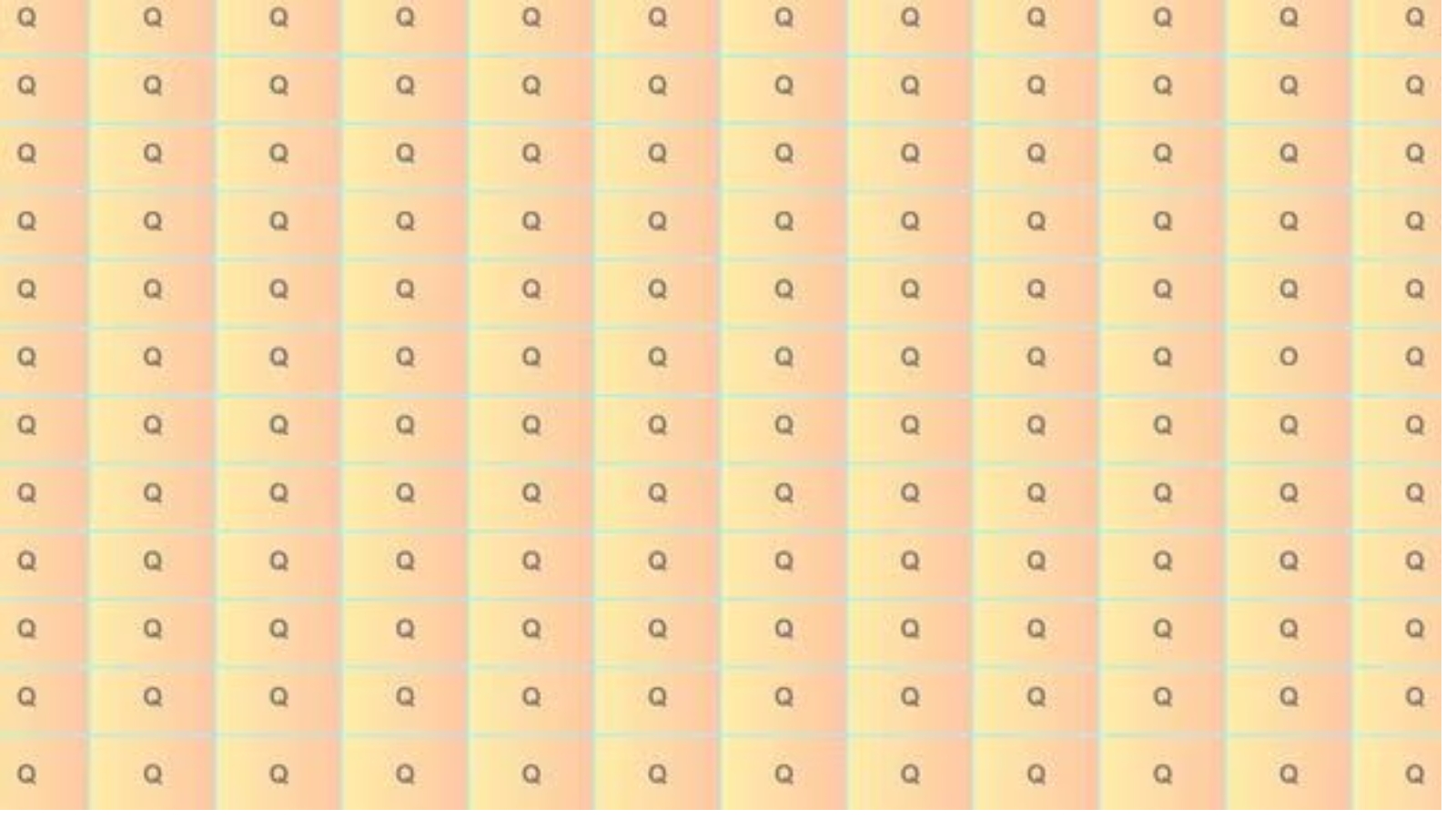Have you ever stared at a puzzle where dozens of similar letters dance before your eyes, making it nearly impossible to spot the one that’s different? Welcome to the fascinating world of visual perception challenges, where your brain’s pattern recognition abilities get put to the ultimate test.
What Makes These Visual Puzzles So Challenging?
When you’re asked to find a single “O” hidden among rows of “Q”s, your brain faces a genuine challenge. These letters share remarkable similarities – both are circular, both have similar proportions, and the only difference lies in that tiny tail that makes a Q distinct from an O.
Your visual system processes information incredibly quickly, scanning patterns and shapes in milliseconds. However, when objects are nearly identical, your brain has to work harder to distinguish between them. This creates what researchers call “visual search difficulty,” where similar distractors make target detection more challenging.
The 15-second time limit adds another layer of complexity. Under pressure, many people experience what psychologists term “tunnel vision,” where anxiety narrows their field of view and actually makes the task harder.
Mind Puzzle Optical Illusion Spot the Hidden ‘O’ in a Sea of ‘Q’s in 15 Seconds

How Your Brain Processes Visual Information
The Role of Attention
Your attention works like a spotlight, illuminating different areas of your visual field. When searching for differences, this spotlight must systematically scan across the entire image. Some people naturally have more efficient scanning patterns, while others may get stuck focusing on one area too long.
Pattern Recognition Systems
Your brain contains specialized neural networks designed to recognize shapes, letters, and patterns. These systems evolved to help humans quickly identify important information in their environment. When similar shapes appear together, these recognition systems can become temporarily “confused,” leading to the difficulty many experience with these puzzles.
The Benefits of Visual Perception Exercises
Improved Focus and Concentration
Regular practice with visual challenges can genuinely improve your ability to maintain attention on specific tasks. Studies show that people who regularly engage with visual puzzles demonstrate better sustained attention in other activities.
Enhanced Processing Speed
Your brain’s ability to quickly process visual information can improve with practice. This skill transfers to real-world situations like reading, driving, and spotting important details in your environment.
Stress Relief Through Mindful Engagement
These puzzles require complete present-moment awareness, creating a natural form of mindfulness practice. Many people find them surprisingly relaxing despite their challenging nature.
Strategies for Success
Systematic Scanning
Instead of randomly looking around, try scanning from left to right, top to bottom. This methodical approach ensures you don’t miss areas or waste time rechecking the same spots.
Peripheral Vision Awareness
Sometimes the answer appears in your peripheral vision before your direct gaze finds it. Trust those subtle visual cues your brain picks up.
Stay Calm Under Pressure
Remember that stress narrows your visual field. Take a deep breath and maintain a relaxed state for better performance.
Visual Perception Challenge Data
| Difficulty Factor | Impact on Success Rate |
|---|---|
| Similar letter shapes | Reduces success by 40-60% |
| Time pressure (15 seconds) | Decreases accuracy by 25-35% |
| Grid size (50+ items) | Increases search time by 200% |
| Age factor (50+ years) | May slow processing by 15-20% |
| Practice effect | Improves speed by 30-50% |
| Distraction level | Reduces accuracy by 20-40% |
Why These Puzzles Go Viral
Social media loves these visual challenges because they’re instantly engaging and shareable. People enjoy testing themselves and challenging friends, creating natural conversation starters. The brief time investment makes them perfect for quick mental breaks during busy days.
The satisfaction of finding the hidden element triggers a small dopamine release, the same neurochemical reward that makes puzzle-solving addictive in the best possible way.
Real-World Applications
These skills aren’t just for entertainment. Professionals in fields like quality control, medical imaging, security screening, and proofreading rely heavily on similar visual discrimination abilities. Regular practice with these puzzles can genuinely improve performance in careers requiring keen visual attention.
Making It More Challenging
Once you master the basic “O among Qs” puzzle, try variations with different letters, numbers, or symbols. Some puzzle creators use colors, orientations, or sizes to add extra complexity layers.
The key is finding the right balance – challenging enough to engage your brain, but not so difficult that it becomes frustrating rather than fun.
Frequently Asked Questions
Q: Why do some people find these puzzles easier than others?
A: Individual differences in visual processing speed, attention control, and pattern recognition abilities contribute to varying performance levels.
Q: Can practicing these puzzles improve my vision?
A: While they won’t improve visual acuity, they can enhance visual processing skills and attention abilities.
Q: What if I can’t find the answer within 15 seconds?
A: Don’t worry! Take your time, use systematic scanning, and remember that practice improves performance significantly.
